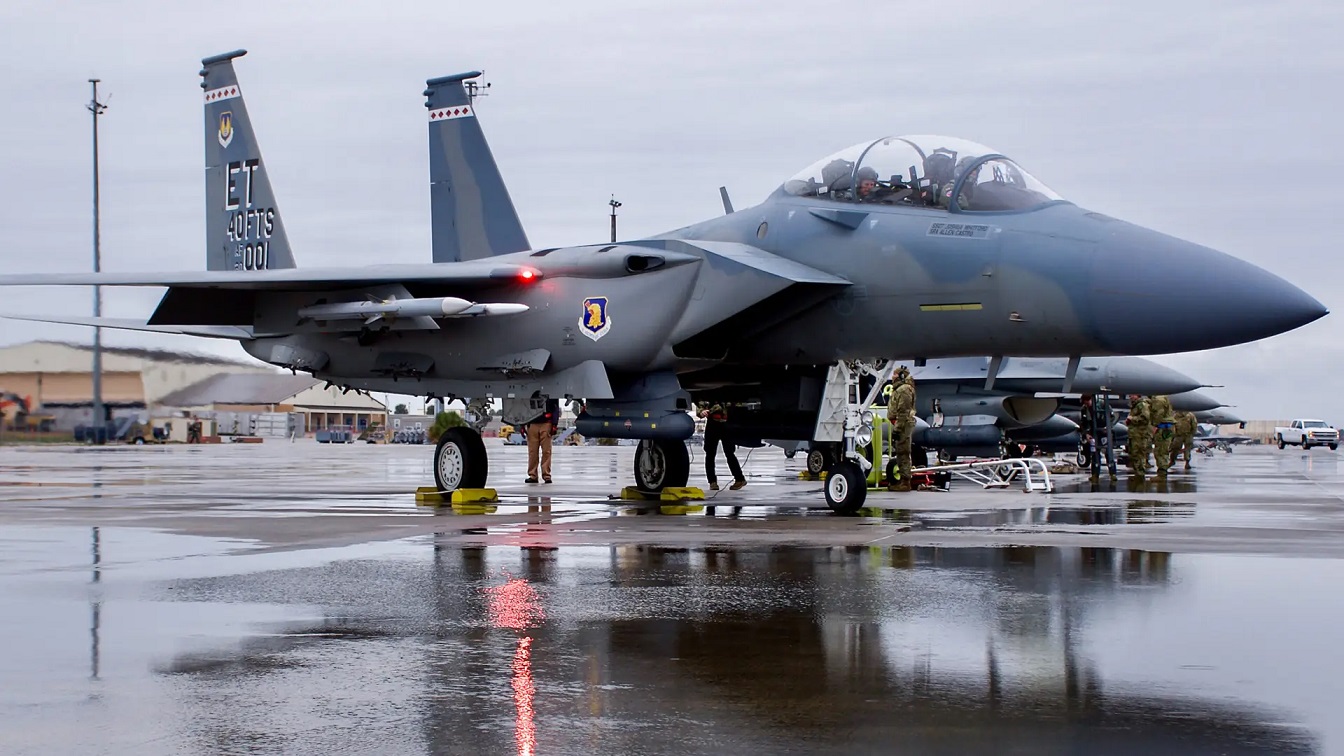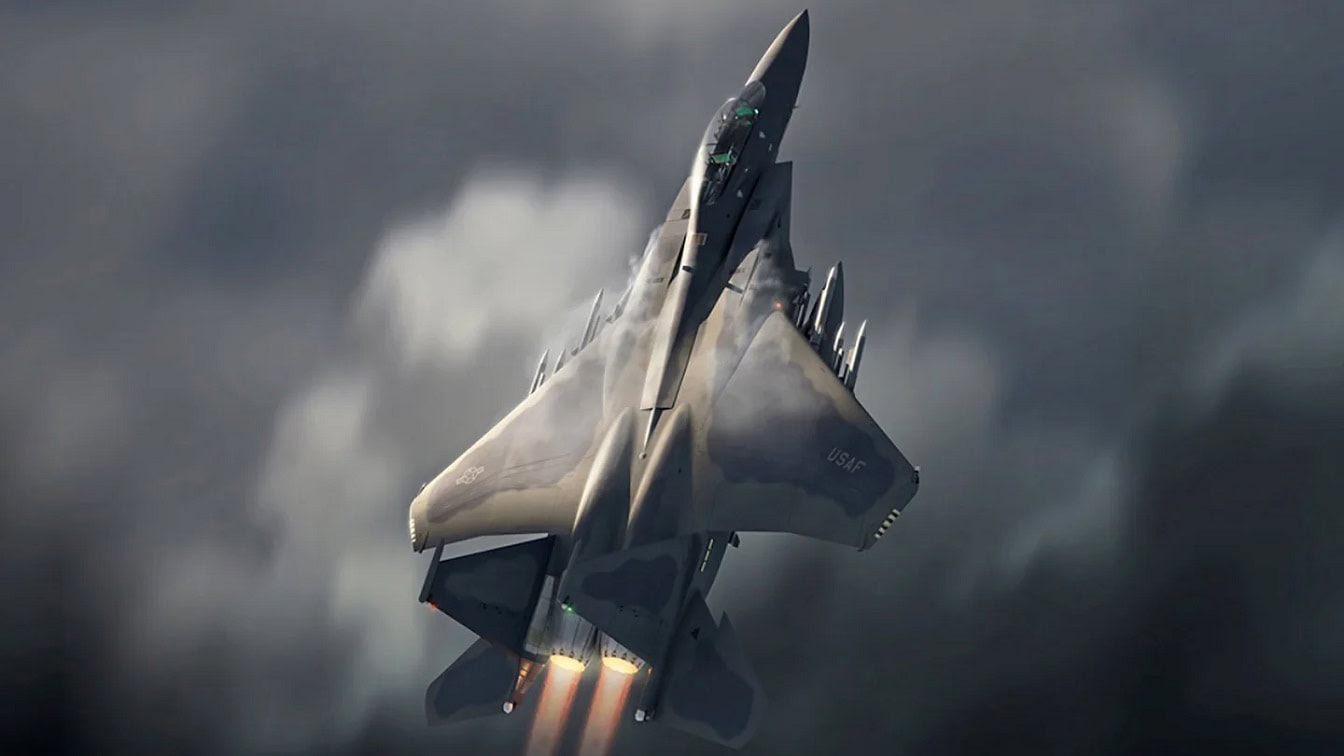Meet the F-15EX Eagle II: The ability to fire hypersonic weapons, travel at speeds of Mach 2.5, and operate with a computer processor capable of 87 billion functions per second are just a few of the breakthrough technologies built into the Air Force’s F-15EX.
Perhaps these attributes are part of why a somewhat surprising Pentagon report finds that the Air Force’s now-emerging 4th-Gen “plus” F-15EX can prove effective in air-to-air combat against 5th-gen aircraft.
In development now for many years, Boeing’s F-15EX integrates a series of new technologies intended to propel the aircraft well beyond 4th-generation fighter jet capability, as it is built with new radar, weapons applications, avionics, fire control, computing, and sensing.
A recent Department of Test & Evaluation (DOT&E) report specifies the success of the F-15EX in testing.
“Against the level of threat tested, the F-15EX is operationally effective in all its air superiority roles, including defensive and offensive counter-air against surrogate fifth-generation adversary aircraft, as well as basic air-to-ground capability against the tested threats,” the report states.
F-15EX Eagle II Fighter: Speed and Sensing
An examination of available specs indicates several reasons why it is considered quite realistic that an F-15EX could potentially prove effective in an air war against 5th-gen aircraft, and they appear to be pure speed, high-speed computing, and sensor range and fidelity.
Several years ago, the F-15 was integrated with the fastest jet-computing processor in the world, called the Advanced Display Core Processor II, which, Boeing innovators have explained, does indeed perform 87 billion computing functions per second.
With computing at much higher speeds, many of the distinct F-15EX attributes reside in the areas of networking, computing, electronic warfare (EW), and radar and threat warning systems. Yet the new jet does incorporate several potentially paradigm-changing propulsion technologies and attack weapons possibilities.
This kind of paradigm-changing computing might help explain why the F-15EX may indeed threaten an F-35 or even an F-22 in air combat. What the F-15EX lacks in stealth could perhaps be accounted for by pure speed and F-35-like high-speed computing.
The F-15EX is listed as being capable of hitting speeds of Mach 2.5, speeds considerably faster than both the Mach 1.6 F-35 and Mach 2.25 F-22.
Weapons Integration
The F-15EX is not only engineered with new levels of thrust but also carries 12 missiles as well as elements of its existing or well-known arsenal, including the AIM-120D, AIM-9x, and standard JDAMS, among others.
While there have been massive software upgrades to the AIM-120D and AIM-9x enabling improved targeting guidance, jamming countermeasures, and explosives, some of the newer weapons additions could potentially be even more groundbreaking.
Hypersonic Weapons for F-15EX Eagle II
The F-15EX will, for example, carry and fire air-launched hypersonic weapons. This decided combat advantage needs little introduction, as its arrival will naturally transform modern air war when it comes to speed of attack, enemy response time, and stand-off attack range.
An air-fired missile traveling at five times the speed of sound would certainly hit an air or ground target operating hundreds of miles away in a matter of minutes, all but eliminating an enemy’s ability to respond in time.
The Air Force has now also armed its F-15EX with the well-known Stormbreaker weapon, a first-of-its-kind air-dropped bomb able to find, track, and destroy moving targets from distances as far as 40 nautical miles in all weather conditions.

F-15EX. Image Credit: U.S. Air Force.
Not only does the Stormbreaker utilize a two-way data link enabling it to adjust course in flight according to a target’s movements, but the weapon is engineered with an often-discussed tri-mode seeker. The “tri-mode” targeting and sensing technology draws upon millimeter wave, infrared, and laser targeting guidance to track and eliminate targets.
The F-15 weapons are engineered to closely align with the kinds of sensing, computing, and electronic warfare (EW) applications known to be fundamental to 5th-gen assets such as the F-35. However, the DOT&E report does add the caveat that, in the testing, the F-15EX may not have been matched against the most advanced threats available. Therefore, it may not be fully known just how comparable an F-15EX is with an F-35.
Yet, many regard the F-35 advantage as a so-called “flying computer” to reside in the fidelity, range, and integration of its sensing, radar, threat warning, and information-sharing systems. This is quite similar to what is described for the F-15EX.
About the Author: Kris Osborn
Kris Osborn is the Military Technology Editor of 19FortyFive and President of Warrior Maven – Center for Military Modernization. Osborn previously served at the Pentagon as a highly qualified expert in the Office of the Assistant Secretary of the Army—Acquisition, Logistics & Technology. Osborn has also worked as an anchor and on-air military specialist at national TV networks. He has appeared as a guest military expert on Fox News, MSNBC, The Military Channel, and The History Channel. He also has a Masters Degree in Comparative Literature from Columbia University.

